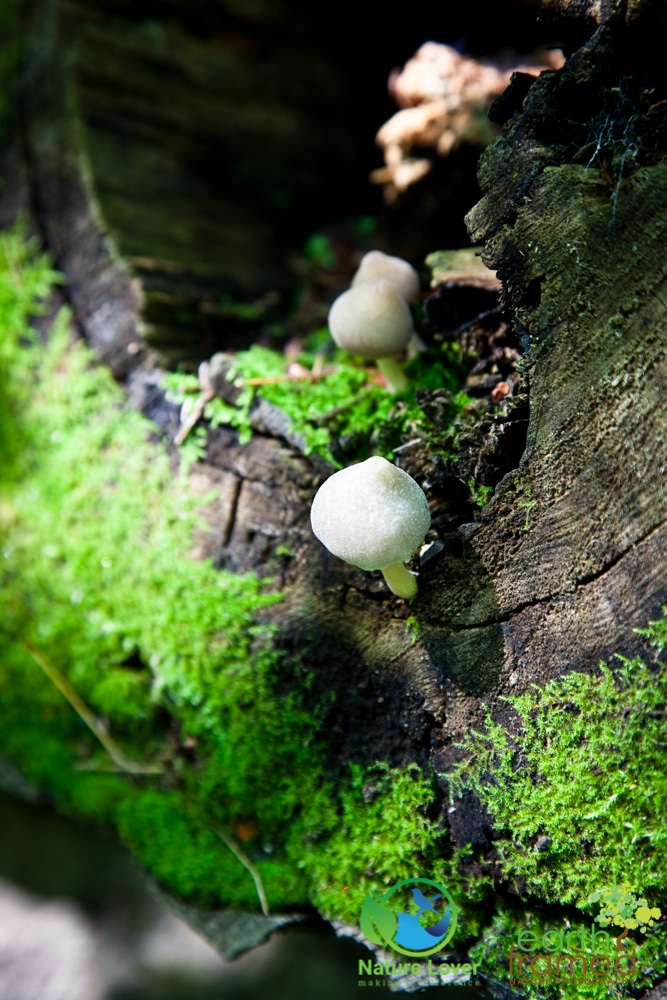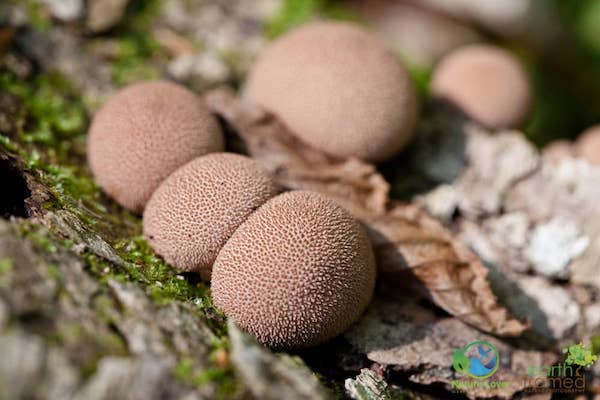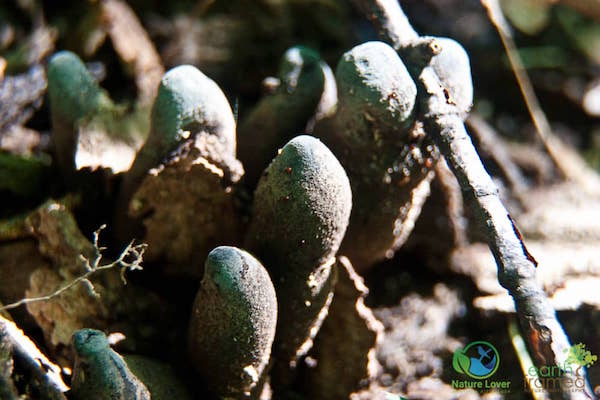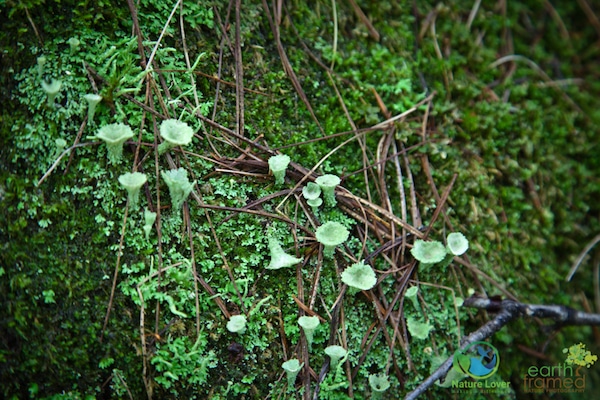Restoule Provincial Park, 8818 Highway 534, Restoule, ON P0H 2R0
[two_third_last][/two_third_last]
Mushrooms and fungi are fun to photograph but can be quite difficult to identify. This is one of the main reasons people are warned not to eat wild mushrooms because some are poisonous and may resemble an edible species.
I am definitely an amateur when it comes to identifying mushrooms, an area I need to develop in the future. I have several field guides that I had used to try to label these species. If I have wrongly identified one, please leave a comment below and I will gladly correct them.
Quite often I can really only really say what group the mushroom might belong to. Hopefully, with time and practice, I will improve my identification skills.
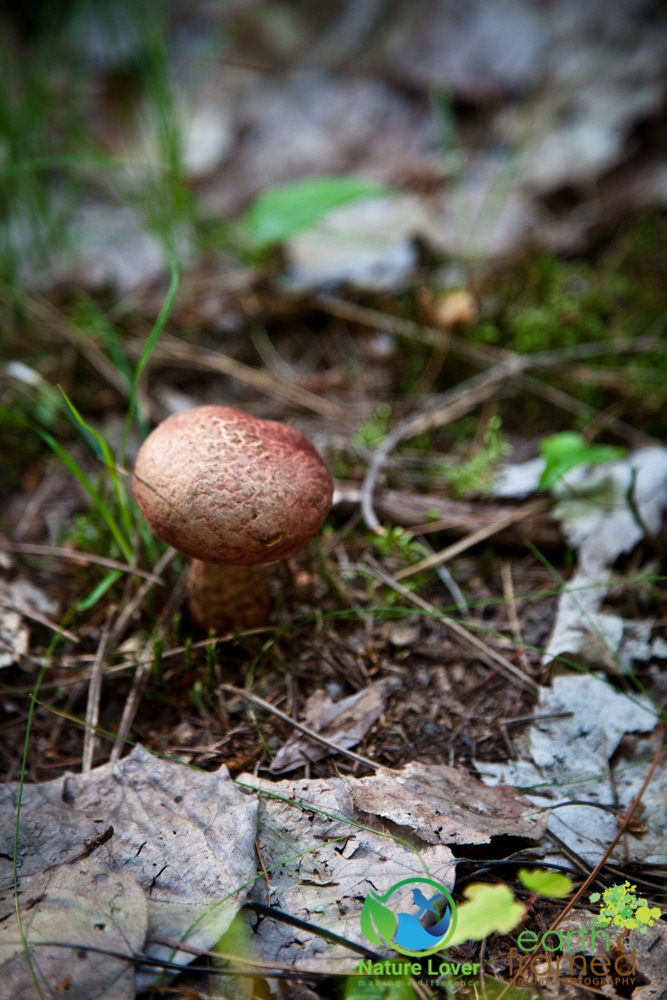
I believe this is a form of a bolete or sponge mushroom. One thing that helps to identify mushrooms to see under the cap. This often requires you to pull out one of the mushrooms, which I really don’t like doing. The main difference between a bolete and a gill mushroom is that the bolete has tubes instead of gills on the underside of the cap.
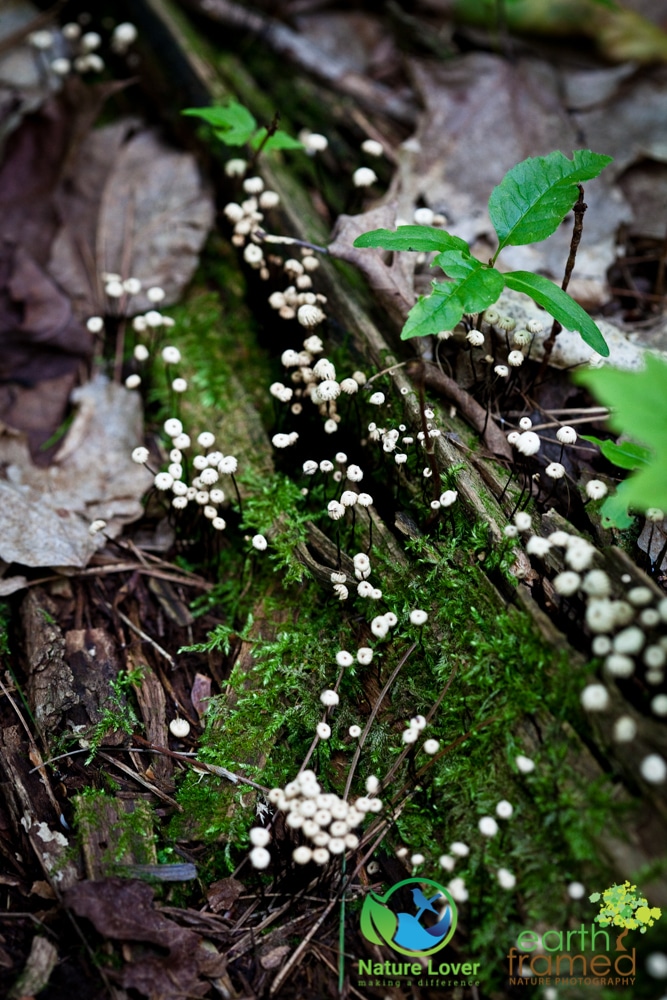
These are Japanese Parasol mushrooms. They are part of the Gill family and are further sub-divided into Dark-Spored Mushrooms. These mushrooms are often found in grass beside roads and pathways or on well-rotted wood, as is the case in this picture. These are very small capped mushrooms.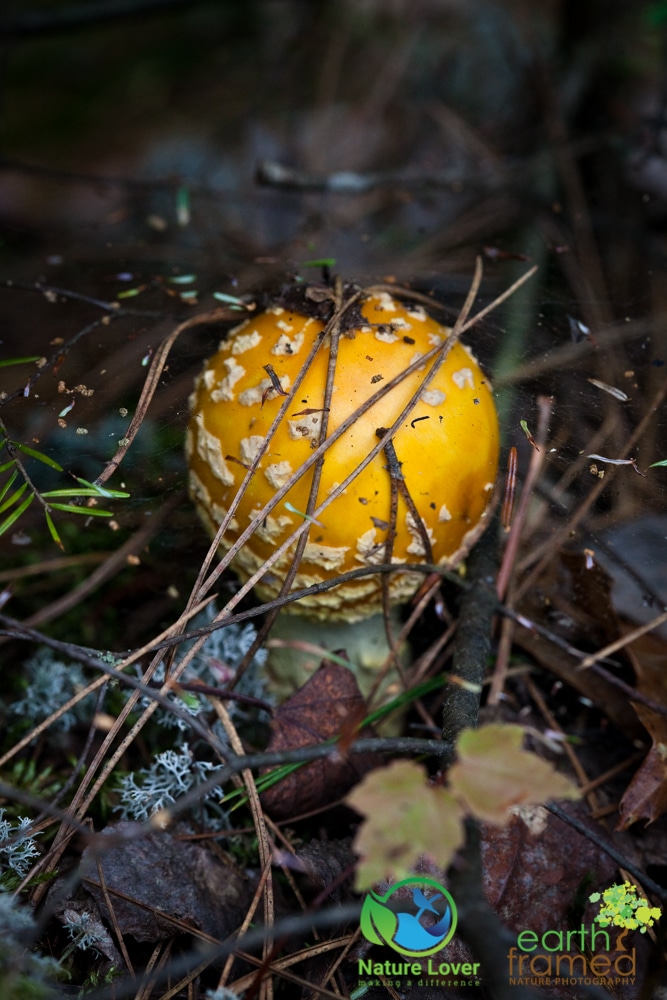
This appears to be a form of ‘Amanita’, gilled mushroom.
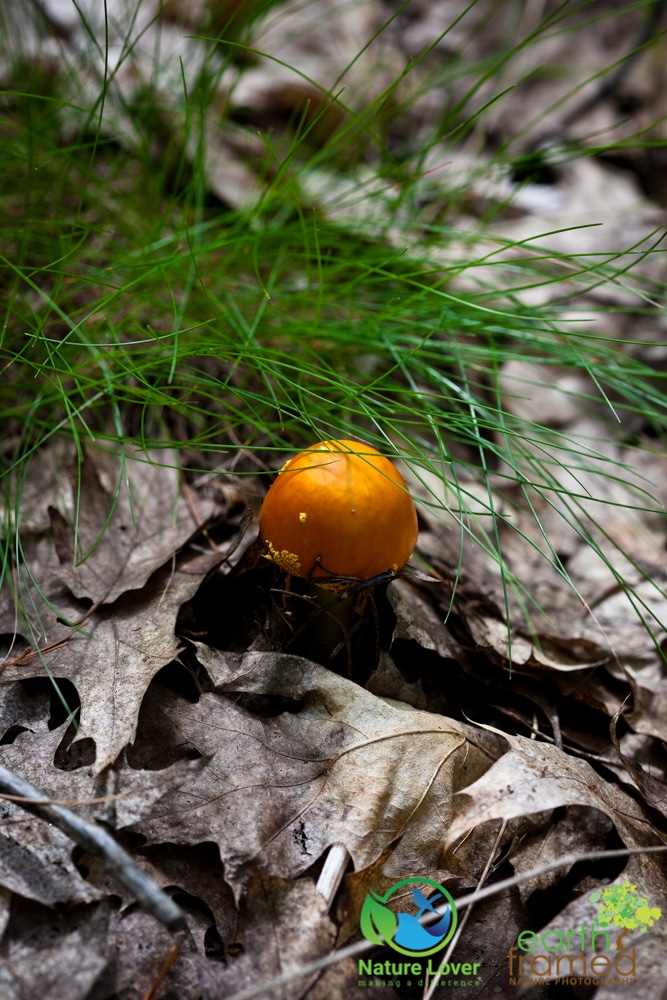
Mushrooms push themselves up through layers of forest floor before they are visible.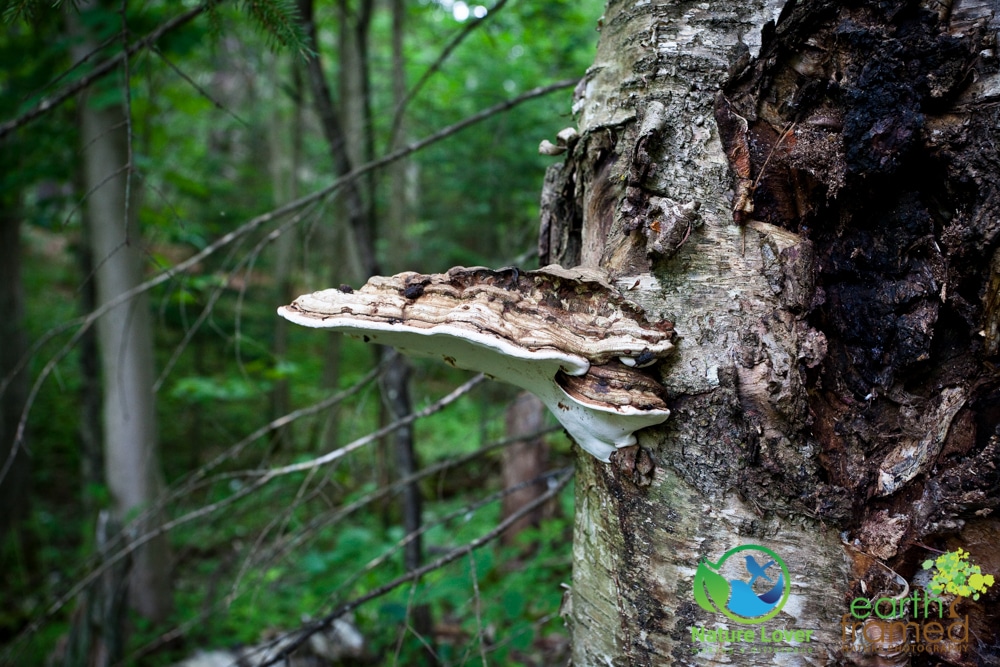
Artist’s Conk bracket fungi can be found on living trees and on recently cut hardwood stumps and logs. Unlike most mushrooms or fungi, which don’t live past a few days, these bracket fungi can persist for several years.
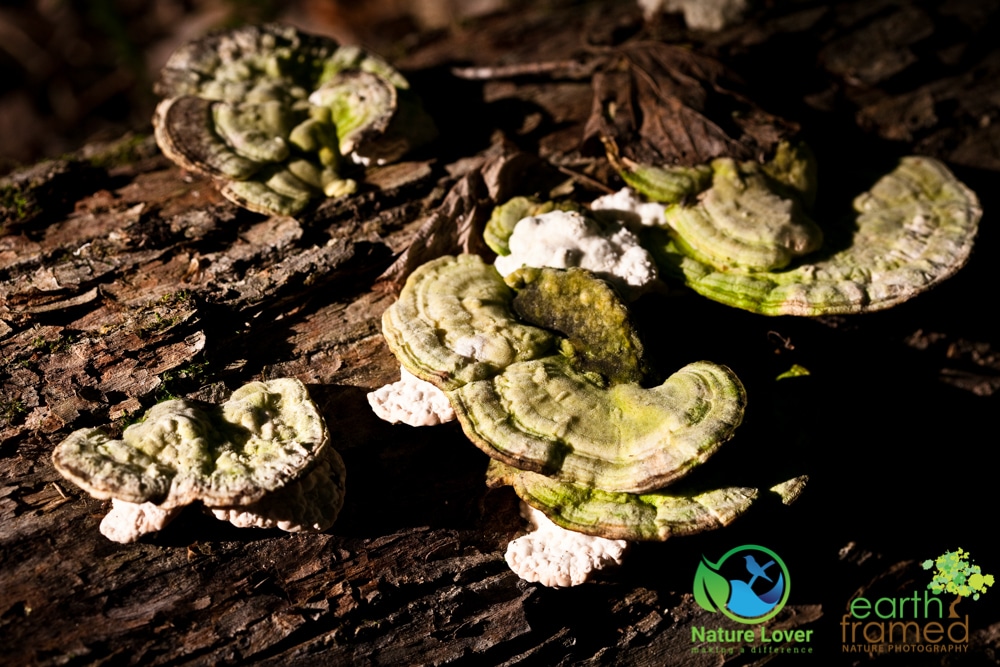
There are several bracket, shelving fungi that are similar to the above picture. To properly identify them, one should look at the spores that are on the bottom side.
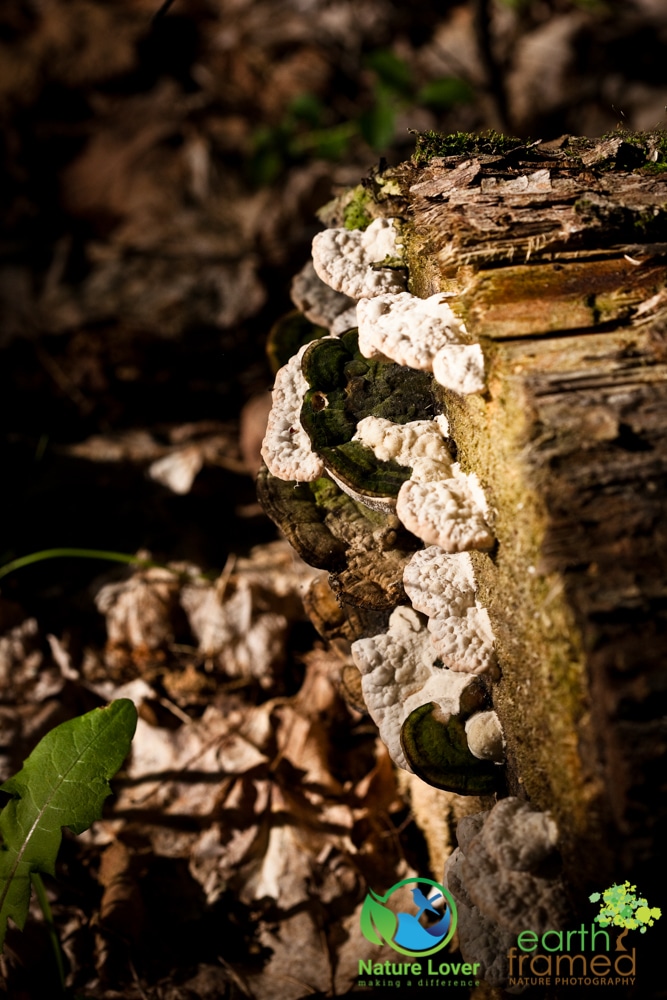
This bracket fungi is quite interesting because of its colour.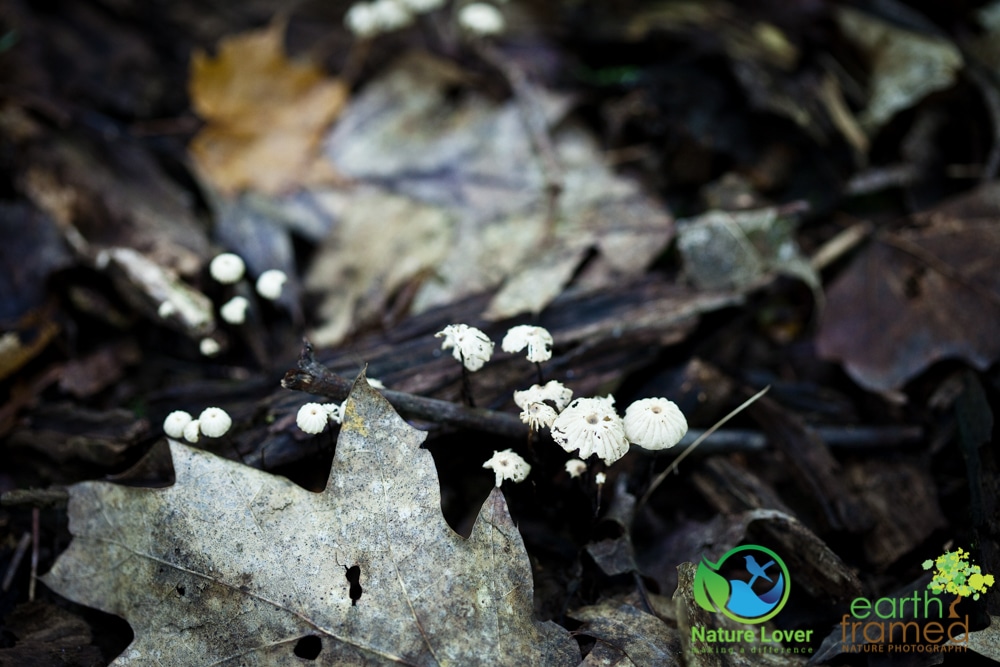
The Horsehair Mushroom is widespread, very common and is edible.
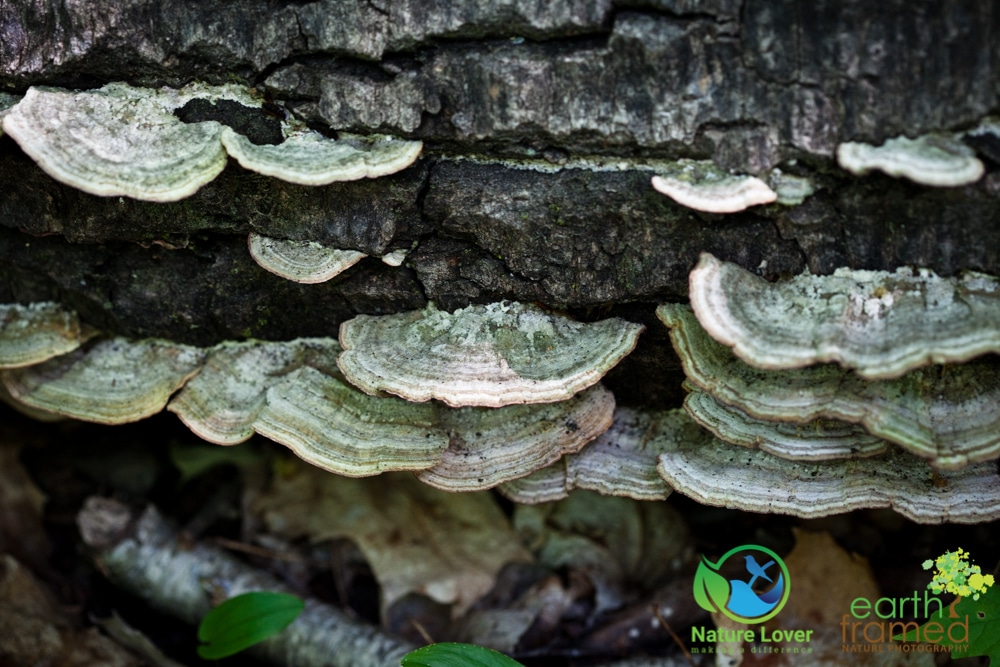
Purple-Toothed Polypore bracket fungi fruitbodies are shelving and overlapping. Usually found on deciduous wood.
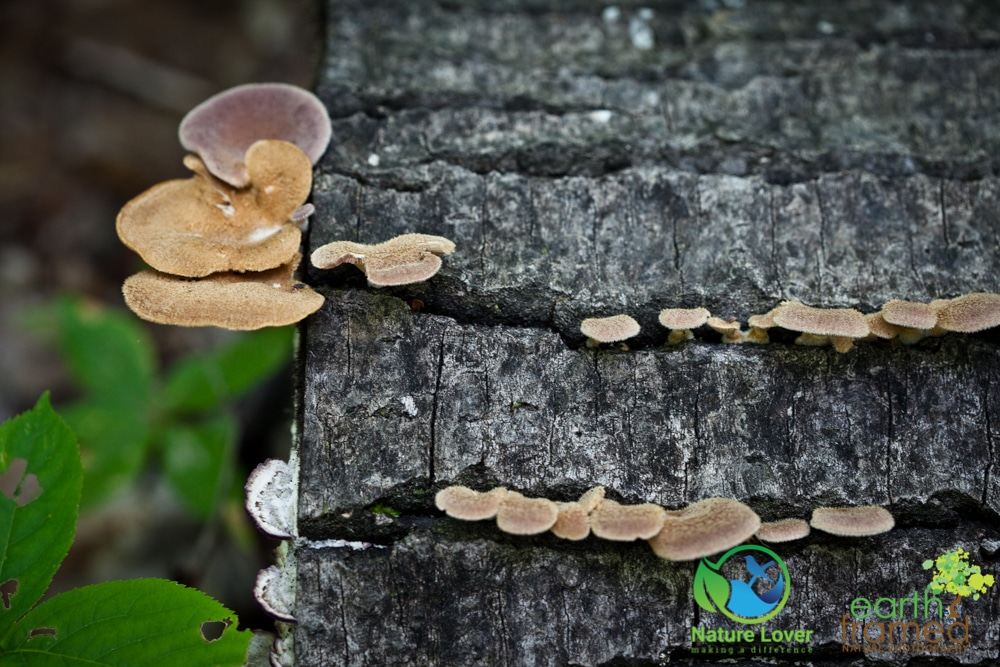
Unlike many bracket fungi, this one actually has a stalk. The Polyporus mori fungi is very common and fruits on dead branches of deciduous trees.
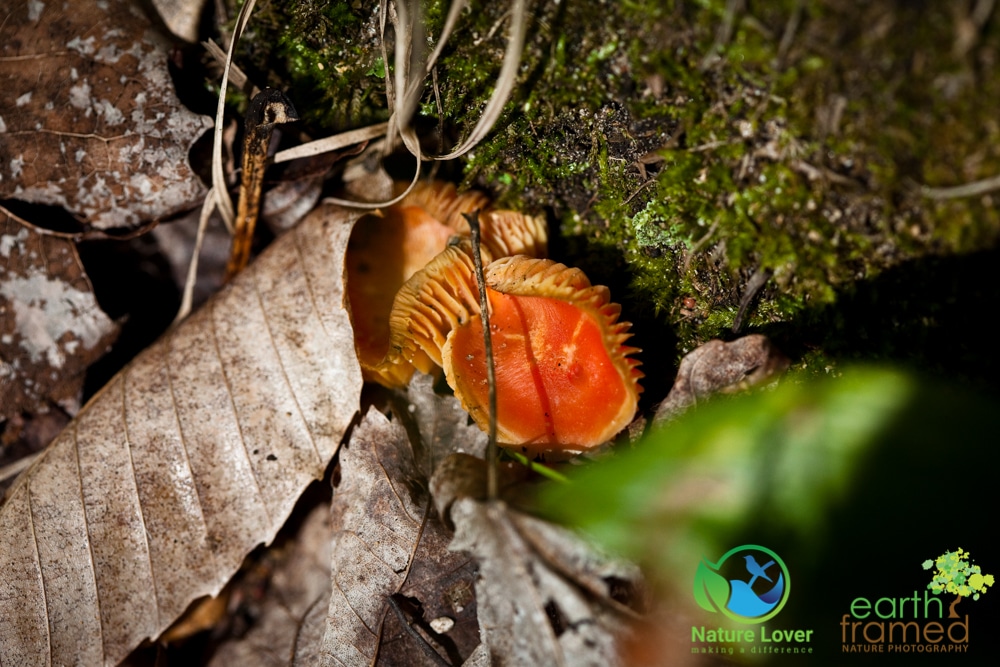
Obviously a gill mushroom. Which one? 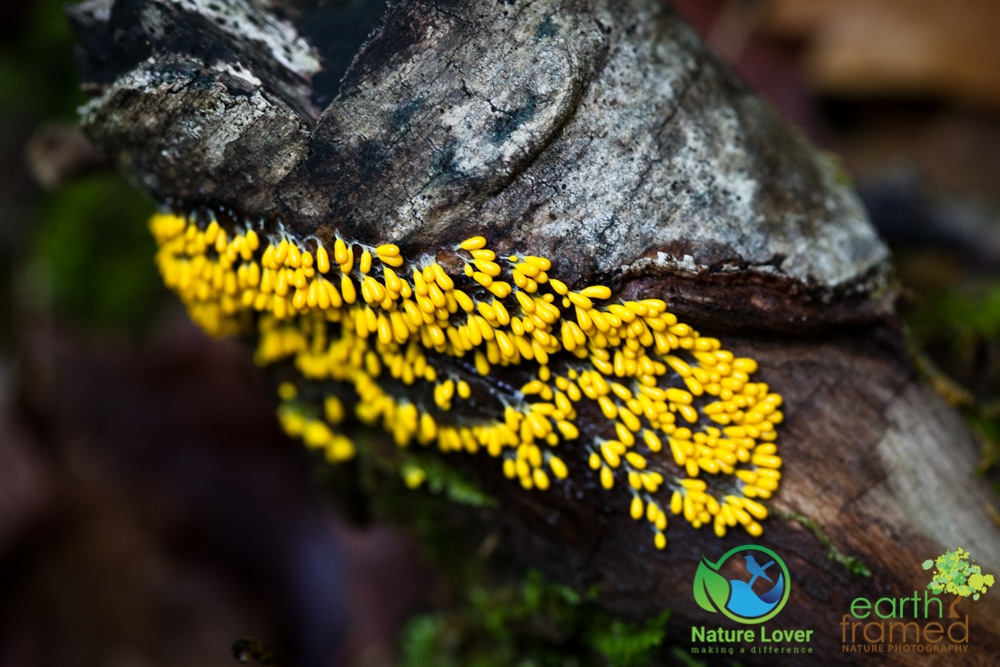
Leocarpus fragilis is a bright yellow slime mold. This species climbs leaves, twigs, and living or dead plants for better spore dispersal.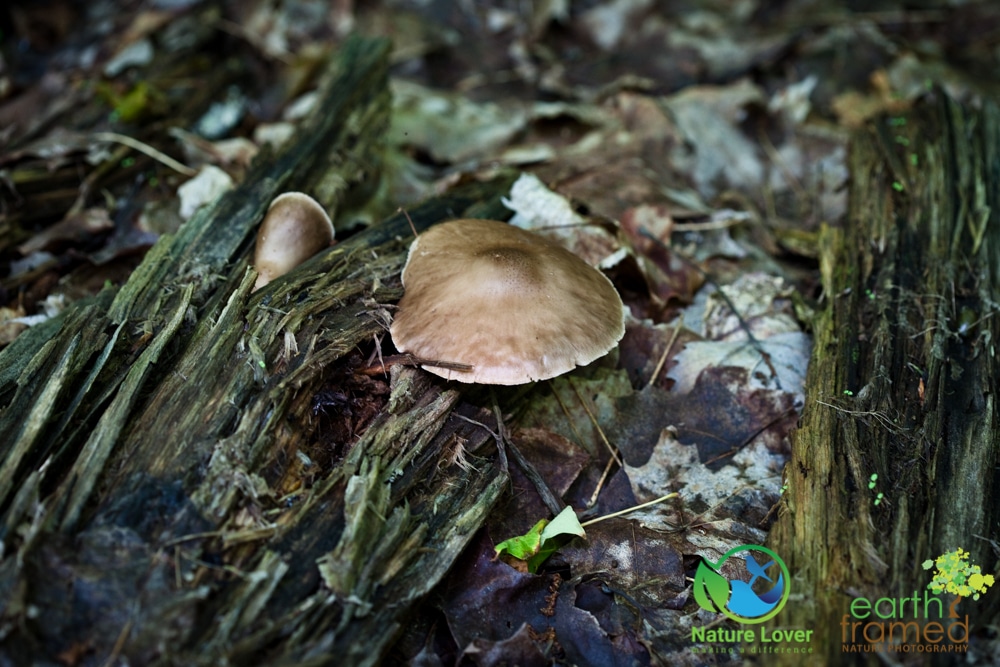
Fruiting on this rotten wood are Deer Mushrooms.
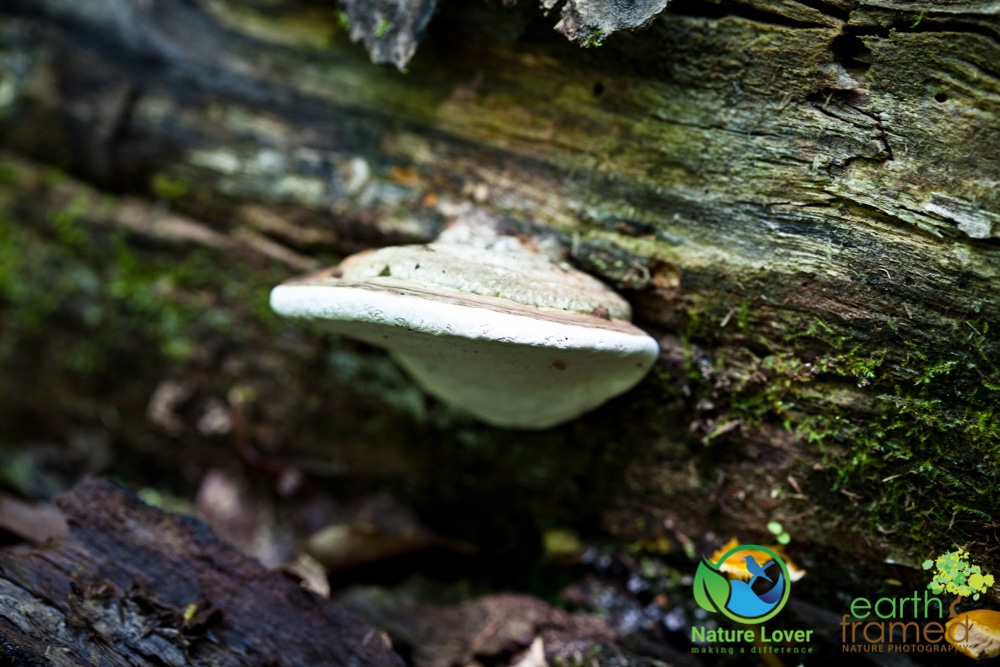
Bracket fungi are leathery or woody in texture and tough compared to other mushrooms. 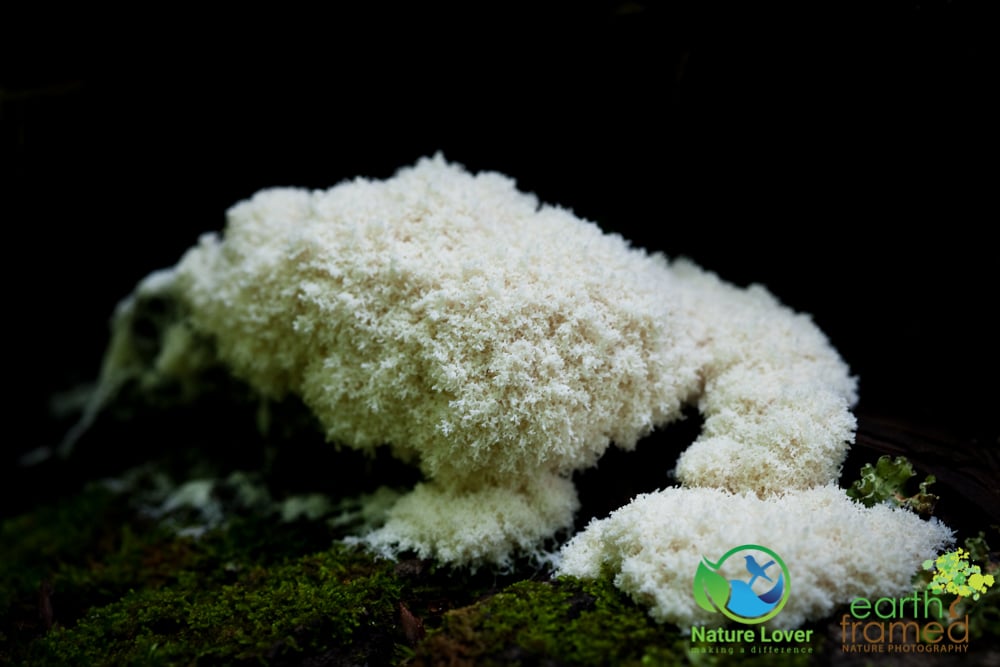
Brefeldia maxima is a slime mold that starts out white but when it matures it turns black and powdery. 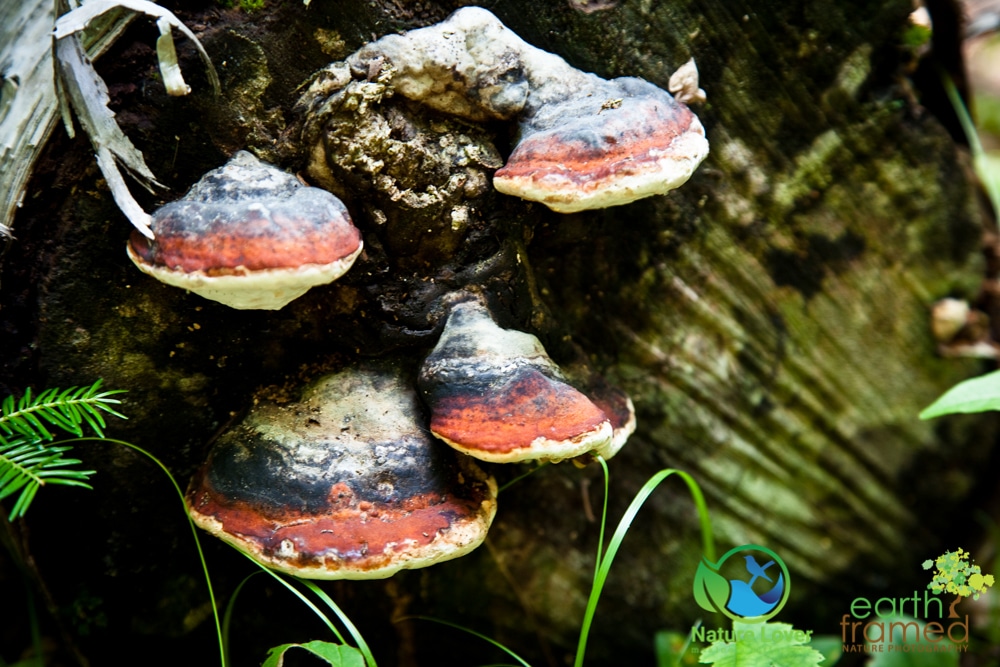
Another bracket fungi that we photographed during our hikes at Restoule was the Red-Banded Polypore. These are very easily identified by their bands and are often found on spruce trees. 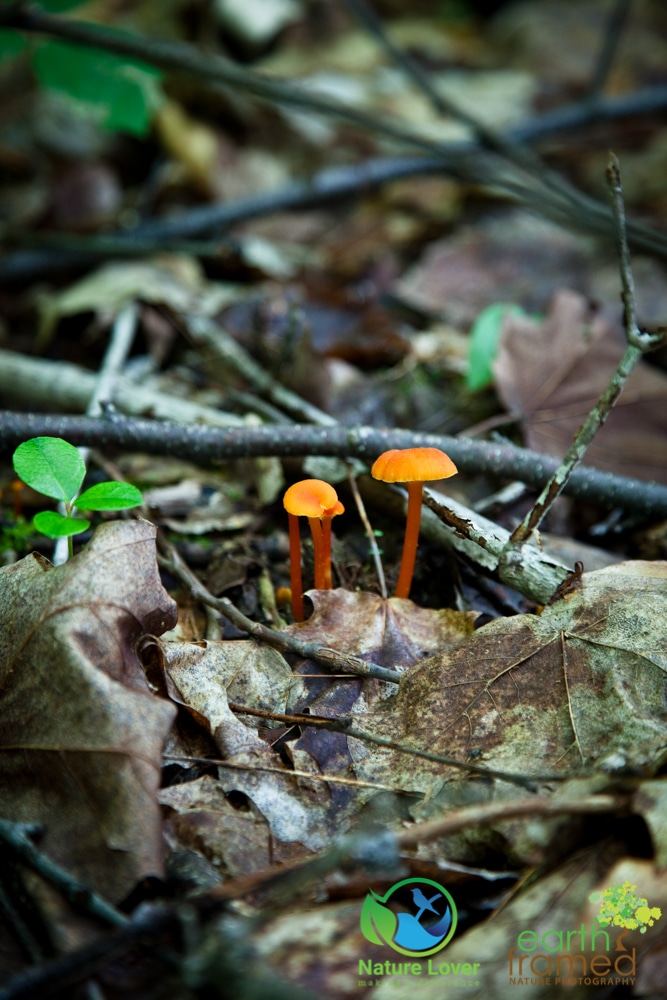
These bright orange mushrooms can be easily spotted on the forest floor. As a light-spored, gilled, waxcap mushroom, these grow on the ground and never on wood.